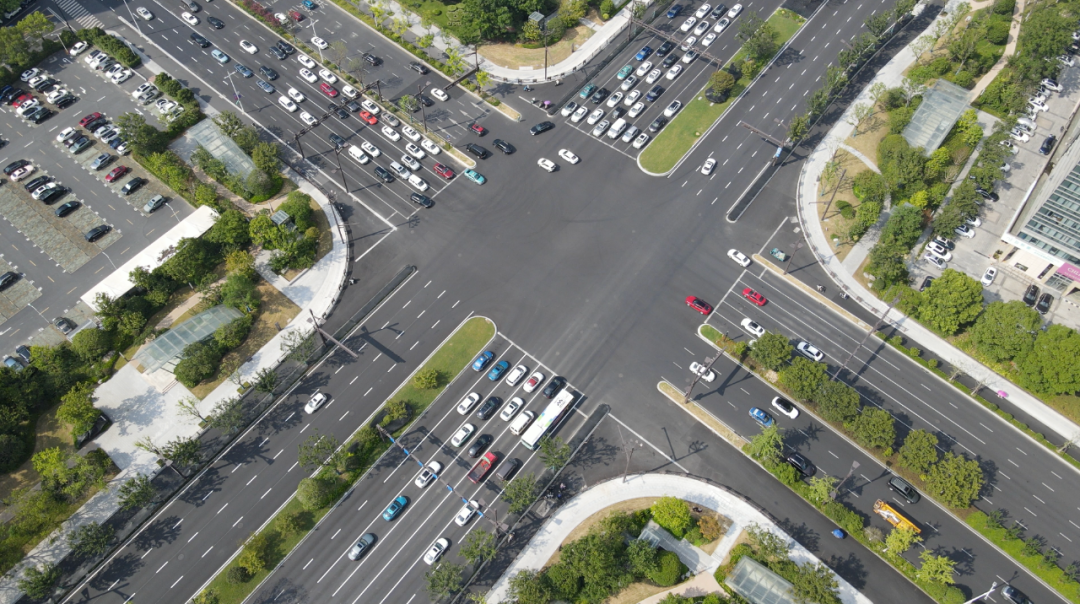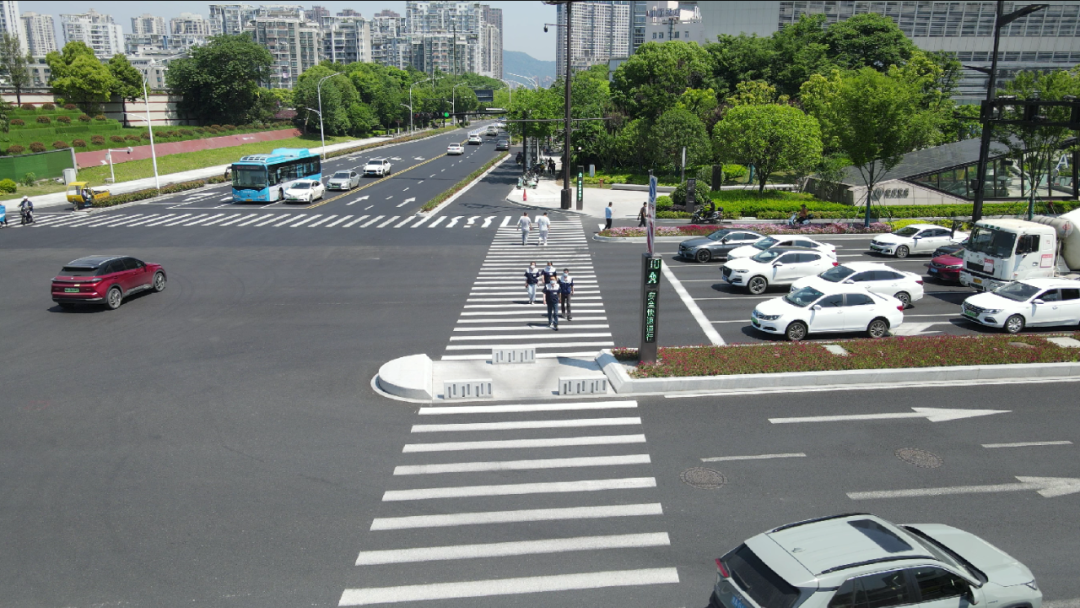“The water glistens beautifully under the clear sky, and the mountains appear mysterious in the rain. Comparing West Lake to Xi Shi, both light and heavy makeup are equally suitable.” Hangzhou, known as the paradise on earth, has historically been the economic and cultural center of southern China, where countless literary figures have left behind timeless masterpieces.
During the recent May Day Golden Week, over 7 million people flocked to Hangzhou, with the West Lake scenic area receiving 697,200 visitors on May 2 alone, making the tourism industry in Hangzhou exceptionally vibrant.
In addition to its rich history and cultural heritage, Hangzhou also boasts strong competitiveness in economic development. The digital industries represented by e-commerce, big data, and cloud computing, along with traditional industries such as textiles, clothing, finance, and cultural creativity, have diversified the economic support for Hangzhou, keeping it at the forefront of the national economy for many years.

However, with the comprehensive development of the economy and tourism, coupled with a population of over ten million, Hangzhou’s transportation faces significant challenges. How can we improve traffic efficiency within limited road space?
At a recent event in Hangzhou hosted by Inspur Information, titled “Smart Computing Opens New Situations: Innovation Machine” national tour, experts from academia and industry expressed that with significant breakthroughs in the application of artificial intelligence (AI) content generation technology, various industries are increasing their focus and investment in AI. The demand for computing power is experiencing explosive growth, diversifying from cloud to edge. Yu Su, Deputy General Manager of the Intelligent Transportation Business Group at Inspur Information, stated that Hangzhou has already begun its digital exploration based on AI in the transportation sector.
Making Roads Intelligent
The widespread application of AI technology has constructed a comprehensive set of intelligent solutions for transportation systems. After the intelligent transformation, the roads integrate digital twin, artificial intelligence, Internet of Things, cloud computing, and other digital technologies, allowing vehicle passage to achieve real-time feedback and control like in a game. Yu Su introduced that part of the intelligent transformation of roads in Hangzhou is undertaken by Inspur Information. By first collecting massive data from various scene perception devices, such as traffic flow, vehicle operation trajectories, and queue lengths, and then performing real-time and rapid analysis through edge computing devices, combined with data centers and cloud, a digital twin of multiple scenarios, including ground and tunnel, has been achieved. Traffic management departments can monitor and control traffic flow at any time, improving traffic efficiency and safety.In the intelligent transportation solution, the main role of AI is to identify dangerous events such as running red lights, pedestrians entering motor vehicle lanes, abnormal parking at intersections, and wrong-way driving through algorithms, and to intelligently adjust traffic signals, variable lanes, and guidance screens, achieving multi-system collaborative control of traffic lights, variable lanes, and guidance screens. Additionally, innovative application scenarios such as smart intersections and green wave corridors have also been successfully implemented.The Green Wave is a traffic management measure that controls the speed and sequence of vehicles on specific road sections to reduce congestion and improve traffic efficiency. Currently, green wave corridors can already be seen on some urban roads in China.According to Shen Bin, Deputy Chief Engineer at Inspur Information, the company has nearly 20 years of technical accumulation in green wave control, with in-depth research in areas such as flow balancing, scene, and control strategies. In building a digital brain, the comprehensive introduction of cloud-edge collaboration technology has further enhanced the system’s responsiveness, enabling it to adapt more quickly to changes in traffic flow.
Yu Su introduced that part of the intelligent transformation of roads in Hangzhou is undertaken by Inspur Information. By first collecting massive data from various scene perception devices, such as traffic flow, vehicle operation trajectories, and queue lengths, and then performing real-time and rapid analysis through edge computing devices, combined with data centers and cloud, a digital twin of multiple scenarios, including ground and tunnel, has been achieved. Traffic management departments can monitor and control traffic flow at any time, improving traffic efficiency and safety.In the intelligent transportation solution, the main role of AI is to identify dangerous events such as running red lights, pedestrians entering motor vehicle lanes, abnormal parking at intersections, and wrong-way driving through algorithms, and to intelligently adjust traffic signals, variable lanes, and guidance screens, achieving multi-system collaborative control of traffic lights, variable lanes, and guidance screens. Additionally, innovative application scenarios such as smart intersections and green wave corridors have also been successfully implemented.The Green Wave is a traffic management measure that controls the speed and sequence of vehicles on specific road sections to reduce congestion and improve traffic efficiency. Currently, green wave corridors can already be seen on some urban roads in China.According to Shen Bin, Deputy Chief Engineer at Inspur Information, the company has nearly 20 years of technical accumulation in green wave control, with in-depth research in areas such as flow balancing, scene, and control strategies. In building a digital brain, the comprehensive introduction of cloud-edge collaboration technology has further enhanced the system’s responsiveness, enabling it to adapt more quickly to changes in traffic flow.
Edge Computing Accelerates Smart Transportation
Those who frequently follow enterprise-level IT will resonate: similar to Hangzhou’s intelligent transportation solution, a prototype was proposed years ago, but due to the limitations of computing power not yet being massively deployed from the center to the edge and the restrictions of AI development, it was temporarily impossible to construct related solutions. Today, both technology and products have matured, finally enabling implementation.Sun Bo, General Manager of the Edge Computing Product Department at Inspur Information, stated: “We began laying out our edge computing business as early as 2017, focusing on promoting intelligent transformation across various fields and empowering the real economy. In recent years, edge computing hardware and software platforms have rapidly developed, and AI capabilities have been introduced, with the intelligent transportation solution modified in collaboration with Inspur Information being a standout project in this field.”Notably, during this event, Inspur Information also announced its layout in vehicle computing related to intelligent transportation, officially launching the first intelligent domain controller EIS400, providing powerful, secure, and efficient vehicle edge computing power at a data center level for intelligent driving. As early as around 2020, Inspur Information was already collaborating with customers on customized product development in the field of autonomous driving. The EIS400 controller released this time supports the most cameras, radars, and inertial navigation in the industry, providing strong computing power for various autonomous driving scenarios such as autonomous taxis, autonomous buses, autonomous trucks, and delivery drones.
AI Helps Achieve Digital Twin in Transportation
From intelligent Q&A of AI large models to AI painting and video production, AI has rapidly entered various industries since the beginning of 2023. In intelligent transportation solutions, AI also plays a crucial role. According to Shen Bin, in the entire field of intelligent transportation informatization, based on years of development and accumulation, a large amount of road-related data has been gathered. However, due to the mixed nature of multi-dimensional data, the complexity of data types, and the massive volume of data, it has been challenging to achieve integrated management.In recent years, the rapid improvement of computing power at the data center, edge, and AI levels has made multi-dimensional data fusion and the construction of digital twins possible. In intelligent transportation solutions, radar perception and video data processing mainly rely on AI technology, including vehicle and personnel recognition, video monitoring processing, etc. Additionally, the configuration scheme based on the signal control system has also achieved real-time automatic learning and optimization, greatly enhancing management efficiency.For example, the radar data collected in the road appears as “points” and cannot be directly mapped to the digital twin world; however, video data in the road can be processed through machine learning, and by combining these two types of data, the real coordinates of the physical world can be mapped to the digital coordinates of the virtual world, thus forming the “metaverse” of transportation.
In intelligent transportation solutions, AI also plays a crucial role. According to Shen Bin, in the entire field of intelligent transportation informatization, based on years of development and accumulation, a large amount of road-related data has been gathered. However, due to the mixed nature of multi-dimensional data, the complexity of data types, and the massive volume of data, it has been challenging to achieve integrated management.In recent years, the rapid improvement of computing power at the data center, edge, and AI levels has made multi-dimensional data fusion and the construction of digital twins possible. In intelligent transportation solutions, radar perception and video data processing mainly rely on AI technology, including vehicle and personnel recognition, video monitoring processing, etc. Additionally, the configuration scheme based on the signal control system has also achieved real-time automatic learning and optimization, greatly enhancing management efficiency.For example, the radar data collected in the road appears as “points” and cannot be directly mapped to the digital twin world; however, video data in the road can be processed through machine learning, and by combining these two types of data, the real coordinates of the physical world can be mapped to the digital coordinates of the virtual world, thus forming the “metaverse” of transportation.
In the Era of Intelligent Computing, Computing Power Extends from Cloud to Edge,
Edge Computing Takes on Heavy Responsibilities
How to respond to the explosive demand for edge computing devices in intelligent transportation solutions?Shen Bin stated that intelligent transportation has high requirements for edge computing. First, the data scale is enormous. Intelligent roads will connect a large amount of radar and video data, including vehicle information, location, speed, etc., with a single intersection generating billions of data points daily. Secondly, the precision of computation is crucial; a key way to realize the digital brain is through the mapping of real-world data, which needs to be quickly recognized and computed, and then mapped to a high-definition road network without any errors, thus requiring high computational precision. Finally, real-time performance is essential; in vehicle-road collaboration scenarios, all data must be computed locally in real-time through edge computing devices deployed roadside.To this end, Inspur Information and Inspur Information jointly developed an edge product. “Combining the needs of roads, traffic, and remote operation and maintenance, our product has undergone several iterations, not only featuring waterproof, dustproof, and high/low-temperature resistance designs but also presenting a diversified development trend through various modular combinations,” Sun Bo explained regarding product design.It is well known that the environmental standards in traditional IT data centers are uniform, maintaining constant temperature and dust-free conditions throughout the year. In contrast, edge computing devices are often deployed in outdoor “iron boxes,” where temperatures can exceed 60 degrees Celsius during summer exposure, and they also face rain, vibration, dust, and low winter temperatures, thus requiring very high standards for the equipment.According to Sun Bo, a significant amount of reliability verification has been conducted in the development of edge computing devices, and partners like Inspur Information have provided many guiding opinions, with both parties collaborating to refine products to meet project needs.At the same time, Inspur Information has also migrated the server monitoring management software platform from the data center to the edge, allowing for real-time queries of device status through software, enabling quick location and repair. The deep collaboration between software and hardware has made the management of edge computing devices more efficient and has facilitated later operation and maintenance.From servers to API interfaces to development tools, Inspur Information has completed a forward-looking layout for the future in the field of edge computing. At the same time, Inspur Information is also focused on promoting deep learning computing, building an open ecosystem, and further helping partners build more flexible, efficient, and intelligent edge computing solutions to empower the real economy.Many industry insiders are discussing: AI is a new round of industrial revolution! In fact, the trend of AI extending into various fields has just begun. Driven by AI large models, the pace of intelligent development has significantly accelerated, and a “metaverse”-like digital transportation network is now becoming a reality.
Long
Press
Attention
Computing Talk Public Account
Professional, creating value!
Sharing the joy of technology with you.

Founder of [Computing Talk] Wu Congcong, pen name Yunzhongzi, has worked for nearly 20 years in various fields such as servers, storage, cloud computing, data centers, networks, virtualization, security, semiconductors, and consumer electronics. The Computing Talk website is now online, please pay attention! www.jisuanzt.com
